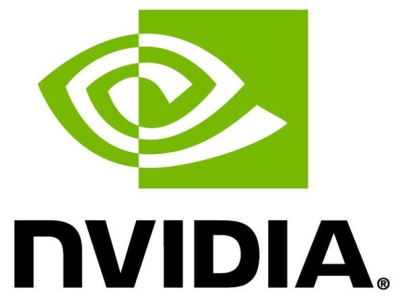cageymaru
Fully [H]
- Joined
- Apr 10, 2003
- Messages
- 22,076
NVIDIA Announces Preliminary Financial Results for Second Quarter Fiscal 2023
https://www.globenewswire.com/news-...l-Results-for-Second-Quarter-Fiscal-2023.html
NVIDIA Announces Preliminary Financial Results for Second Quarter Fiscal 2023
August 08, 2022 09:00 ET | Source: NVIDIA- Preliminary second quarter revenue of $6.70 billion versus outlook of $8.10 billion
- Shortfall versus outlook primarily driven by weaker Gaming revenue
- Management to discuss financial results and outlook on Aug. 24 earnings call
SANTA CLARA, Calif., Aug. 08, 2022 (GLOBE NEWSWIRE) -- NVIDIA (NASDAQ: NVDA) today announced selected preliminary financial results for the second quarter ended July 31, 2022.
Second quarter revenue is expected to be approximately $6.70 billion, down 19% sequentially and up 3% from the prior year, primarily reflecting weaker than forecasted Gaming revenue. Gaming revenue was $2.04 billion, down 44% sequentially and down 33% from the prior year. Data Center revenue was $3.81 billion, up 1% sequentially and up 61% from the prior year.
The shortfall relative to the May revenue outlook of $8.10 billion was primarily attributable to lower sell-in of Gaming products reflecting a reduction in channel partner sales likely due to macroeconomic headwinds. In addition to reducing sell-in, the company implemented pricing programs with channel partners to reflect challenging market conditions that are expected to persist into the third quarter.
Data Center revenue, though a record, was somewhat short of the company’s expectations, as it was impacted by supply chain disruptions.
Second quarter results are expected to include approximately $1.32 billion of charges, primarily for inventory and related reserves, based on revised expectations of future demand.
“Our gaming product sell-through projections declined significantly as the quarter progressed,” said Jensen Huang, founder and CEO of NVIDIA. “As we expect the macroeconomic conditions affecting sell-through to continue, we took actions with our Gaming partners to adjust channel prices and inventory.
“NVIDIA has excellent products and position driving large and growing markets. As we navigate these challenges, we remain focused on the once-in-a-generation opportunity to reinvent computing for the era of AI,” he said.
“The significant charges incurred in the quarter reflect previous long-term purchase commitments we made during a time of severe component shortages and our current expectation of ongoing macroeconomic uncertainty,” said Colette Kress, EVP and CFO of NVIDIA.
“We believe our long-term gross margin profile is intact. We have slowed operating expense growth, balancing investments for long-term growth while managing near-term profitability. We plan to continue stock buybacks as we foresee strong cash generation and future growth,” she said.
| Q2 FY23 Outlook1 | Q2 FY23 Preliminary Results | |
| Revenue | $8.10 billion, plus or minus 2% | $6.70 billion |
| Gross margin – GAAP Gross margin – non-GAAP | 65.1%, plus or minus 50 bps 67.1%, plus or minus 50 bps | 43.7%, plus or minus 50 bps 46.1%, plus or minus 50 bps |
| Operating expenses – GAAP Operating expenses – non-GAAP | $2.46 billion $1.75 billion | $2.42 billion $1.75 billion |
| GAAP and non-GAAP other income and expense | $40 million expense | $24 million and $16 million expense, respectively |
| GAAP and non-GAAP tax rate | 12.5%, plus or minus 1%, excluding discrete items | -35% GAAP (benefit) and 2% non-GAAP, including discrete items |
1 Announced in May 2022 in connection with the company’s press release announcing its financial results for first quarter fiscal 2023.
| Revenue by Market Platform ($ in billions) | Q2 FY23 Preliminary Results | Q/Q | Y/Y |
| Gaming | $2.04 | Down 44% | Down 33% |
| Data Center | 3.81 | Up 1% | Up 61% |
| Professional Visualization | 0.50 | Down 20% | Down 4% |
| Automotive | 0.22 | Up 59% | Up 45% |
| OEM and Other | 0.13 | Down 12% | Down 66% |
| Total | $6.70 | Down 19% | Up 3% |
The preliminary results for the second quarter ended July 31, 2022, are an estimate, based on information available to management as of the date of this release, and are subject to further changes upon completion of the company’s standard quarter and year-end closing procedures. This update does not present all necessary information for an understanding of NVIDIA’s financial condition as of the date of this release, or its results of operations for the second quarter. As NVIDIA completes its quarter-end financial close process and finalizes its financial statements for the quarter, it will be required to make significant judgments in a number of areas. It is possible that NVIDIA may identify items that require it to make adjustments to the preliminary financial information set forth above and those changes could be material. NVIDIA does not intend to update such financial information prior to release of its final second quarter financial statement information, which is currently scheduled for Aug. 24, 2022.
Conference Call and Webcast Information
NVIDIA will host a conference call on Wednesday, Aug. 24, at 2 p.m. PT (5 p.m. ET), to discuss its financial results for the second quarter of fiscal year 2023.
The call will be webcast live (in listen-only mode) on investor.nvidia.com. The company’s prepared remarks will be followed by a question-and-answer session, which will be limited to questions from financial analysts and institutional investors.
Ahead of the call, NVIDIA will provide written commentary on its second-quarter results from its CFO, Colette Kress. This material will be posted to investor.nvidia.com immediately after the company’s results are publicly announced at approximately 1:20 p.m. PT.
The webcast will be recorded and available for replay until the company’s conference call to discuss financial results for its third quarter of fiscal year 2023.
Non-GAAP Measures
In addition to U.S. GAAP financial measures, this press release includes preliminary estimates of non-GAAP measures of certain components of financial performance. These preliminary estimates of non-GAAP measures include non-GAAP gross margin, operating expenses, other income and expense, and income tax expense.
These non-GAAP financial measures exclude stock-based compensation expense, acquisition-related and other costs, gains or losses from non-affiliated investments, interest expense related to amortization of debt discount and the associated tax impact of these items, where applicable.
A preliminary updated reconciliation of GAAP to non-GAAP gross margin, operating expenses, other income and expenses and tax rate is as follows:
| Reconciliation of GAAP to non-GAAP Financial Measures ($ in millions) | Q2 FY23 Preliminary Results |
| GAAP gross margin | 43.7% |
| Stock-based compensation expense, acquisition-related costs, and other costs | 2.4 |
| Non-GAAP gross margin | 46.1% |
| GAAP operating expenses | $2,416 |
| Stock-based compensation expense and acquisition-related costs | (667) |
| Non-GAAP operating expenses | $1,749 |
| GAAP other expense, net | $24 |
| Losses from non-affiliated investments and other costs | (8) |
| Non-GAAP other expense, net | $16 |
| GAAP tax rate (benefit) | (35%) |
| Tax impact of non-GAAP adjustments | 37 |
| Non-GAAP tax rate | 2% |
NVIDIA believes the presentation of its non-GAAP financial measures enhances the user’s overall understanding of the company’s financial performance. The presentation of the company’s non-GAAP financial measures is not meant to be considered in isolation or as a substitute for the company’s financial results prepared in accordance with GAAP, and the company’s non-GAAP measures may be different from non-GAAP measures used by other companies.
About NVIDIA
Since its founding in 1993, NVIDIA (NASDAQ: NVDA) has been a pioneer in accelerated computing. The company’s invention of the GPU in 1999 sparked the growth of the PC gaming market, redefined computer graphics and ignited the era of modern AI. NVIDIA is now a full-stack computing company with data-center-scale offerings that are reshaping industry. More information at https://nvidianews.nvidia.com/.
For further information, contact:
| Simona Jankowski | Robert Sherbin |
| Investor Relations | Corporate Communications |
| NVIDIA Corporation | NVIDIA Corporation |
| [email protected] | [email protected] |
Certain statements in this press release including, but not limited to, statements as to: NVIDIA’s preliminary results for the second quarter of fiscal 2023; our excellent products and position driving large and growing markets; challenging market conditions expected to persist into the third quarter; our expectation that the macroeconomic conditions affecting sell-through will continue; our focus on the once-in-a-generation opportunity to reinvent computing for the era of AI; our belief that our long-term gross margin profile is intact; slowing operating expense growth, balancing investments for long-term growth while managing near-term profitability; our plan to continue stock buybacks; our belief in our strong cash generation abilities and future growth; and NVIDIA’s quarter-end financial close process and preparation of financial statements for the quarter are forward-looking statements that are subject to risks and uncertainties that could cause results to be materially different than expectations. Important factors that could cause actual results to differ materially include: global economic conditions; our reliance on third parties to manufacture, assemble, package and test our products; the impact of technological development and competition; development of new products and technologies or enhancements to our existing product and technologies; market acceptance of our products or our partners’ products; design, manufacturing or software defects; changes in consumer preferences or demands; changes in industry standards and interfaces; unexpected loss of performance of our products or technologies when integrated into systems; as well as other factors detailed from time to time in the most recent reports NVIDIA files with the Securities and Exchange Commission, or SEC, including, but not limited to, its annual report on Form 10-K and quarterly reports on Form 10-Q. Copies of reports filed with the SEC are posted on the company’s website and are available from NVIDIA without charge. These forward-looking statements are not guarantees of future performance and speak only as of the date hereof, and, except as required by law, NVIDIA disclaims any obligation to update these forward-looking statements to reflect future events or circumstances.
© 2022 NVIDIA Corporation. All rights reserved. NVIDIA and the NVIDIA logo are trademarks and/or registered trademarks of NVIDIA Corporation in the U.S. and/or other countries. Other company and product names may be trademarks of the respective companies with which they are associated. Features, pricing, availability, and specifications are subject to change without notice.

![[H]ard|Forum](/styles/hardforum/xenforo/logo_dark.png)


